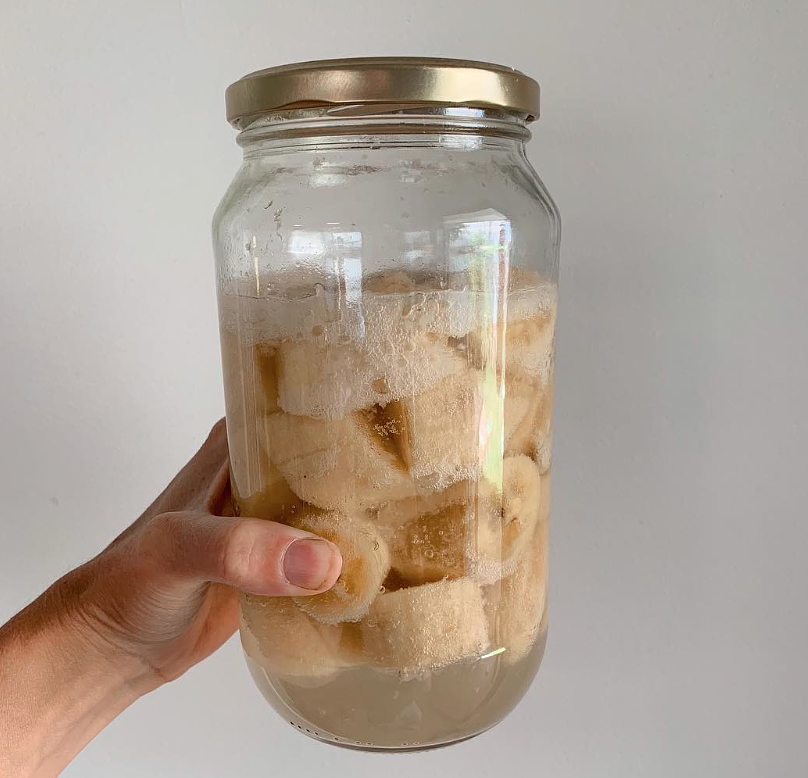Fruit is an incredible natural food; full of fibre, nutrients, minerals & antioxidants that are so beneficial to our body. Fruit is also high in fructose, which isn’t necessarily a bad thing when we eat it in appropriate amounts, but when we are loading up foods like smoothies, or bliss balls etc with lots of fruit we might end up eating more sugar than we would like to consume on a daily basis. For most people this will be fine, and their digestive system will break down and metabolise the sugars. However if you suffer from gut issues then the body will have difficult breaking down the sugars and they will ferment in the gut which will feed the bad bacteria, which will then increase digestive issues.
Some other benefits of fermenting fruit are:
-
Turns the fruit into a probiotic rich food source
-
Helps promote the good bacteria in the gut and restores healthy flora
-
Improves digestion
-
Pre-digests the fruit making it easier on the gut
-
Increases immunity
-
Increases the bio-availability of nutrients
-
Removes the fructose
You can essentially ferment any fruit you like. The higher the sugar content of fruit, the longer it will take to ferment. Some of the fruits I have experimented with are:
-
Bananas – takes approximately 48 hours
-
Dates – takes approximately 48 hours
-
Apples – takes approximately 24 hours
-
Berries – takes approximately 12 hours
-
Mango – takes approximately 24 hours
So, how do you do it?
-
Chop your chosen fruit up (skin removed/seeds removed) and place into a clean large jar (I’d recommend a FIDO style jar with a lid like this). If doing multiple fruits you can add them to the same jar, or seperate into different jars.
-
Pour kefir (already fermented but prior to secondary ferment) on top of the fruit so that it is completely covered. Make sure there is a gap at the top of the jar (at least an inch) as the fruits will swell and bubble!
-
Close the lid of the jar and place in pantry or bench, away from direct sunlight and allow to ferment. The fermentation time will be different with each fruit, and dependent on the weather. In the summertime the fruits will ferment quicker, and in the winter will take a bit longer. The best way to know the fruits are ready is to taste them regularly, they are ready when they no longer taste sweet, but do not taste alcoholic!
-
Once they are ready, remove them from the kefir and place in the fridge or freezer to stop the fermentation process.
What do you do with them once they are fermented?
Personally I don’t really like eating the fermented fruits alone, as I don’t like the taste, so these are some ways that we incorporate them into our diet:
- Freeze them and add to smoothies
- Freeze and make ‘nice cream’
- Make fermented date bliss balls
- Blend and add to chia pudding or yoghurt
- Blend and freeze in iceblock moulds
- And with the left over kefir liquid, this can then be drinken, or reused for another cycle of fermented fruits!
Fermented fruits are great for baby, kids and yourself. I would only start baby on 1 tsp and gradually build up. Just be careful not to give baby over fermented fruits as it contains a small alcohol content.
Here are two recipes that I commonly use with fermented fruits, I like to incorporate fermented fruits and non fermented fruits together as I find that the flavour is more palatable, and like I have said, my gut can handle and metabolise natural fruits and I am fermenting for the added extra probiotics etc.
Fermented banana smoothie
Serves 2
Ingredients:
1 frozen banana
1 frozen fermented banana
350ml coconut milk (or any milk of choice)
1 handful ice
1 serve collagen powder (optional)
1 TBSP nut butter (any is fine just make sure baby has had this nut before if serving for baby)
1 tsp cinnamon
1 tbsp chia seeds
1 tbsp hemp seeds
Optional add in’s:
Honey (not for babies under 1), maple syrup, 1 medjool date, 1-2 tsp MCT oil (wouldn’t recommend for small children – can add to your own after), 1 handful of baby spinach or frozen berries (or fermented berries), vanilla paste, maca.
Method:
- Blend and serve!
Fermented date balls
1/2 cup fermented dates
1 cup dates (or can do all fermented dates)
1.5 cup desiccated coconut
1 tbsp cacao powder
Method:
-
Add fermented dates, dates and coconut to high speed blender or food processor until well combined
-
Add cacao and blend again. if the mixture is too wet add more coconut and blend.
-
Use your hands to mix into bite sized balls (will make approximately 10)
-
Leave plain or can roll in cinnamon, cacao, coconut or turmeric
-
Store in container in fridge for up to 1 week.
Fermented Fruit
Equipment
- Glass Jar
- Cloth with Rubber Band
Ingredients
- Fruit of choice dates, bananas, mangoes and cherries all work well
- Kefir
Instructions
- Place your fruit in a clean glass jar and top with enough kefir to cover
- Close the lid (or put a cloth over top secured with a rubber band) then leave on your bench.
- It will take about 12-24 hours (quicker in hot weather).
- You are then left with cultured fruit which you can freeze for smoothies (or use dates in bliss balls etc), delicious flavoured kefir to drink, or you can use that kefir to ferment the next batch of fruit!





+ show comments
- Hide Comments
add a comment